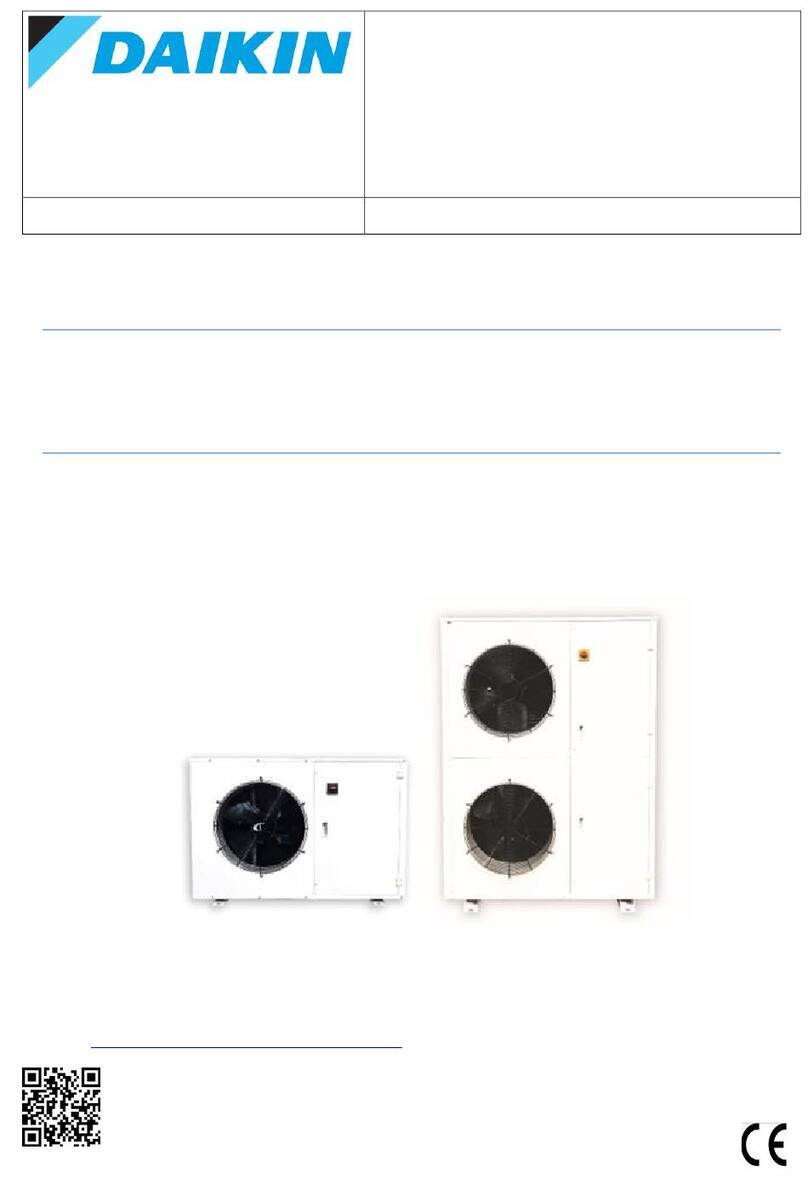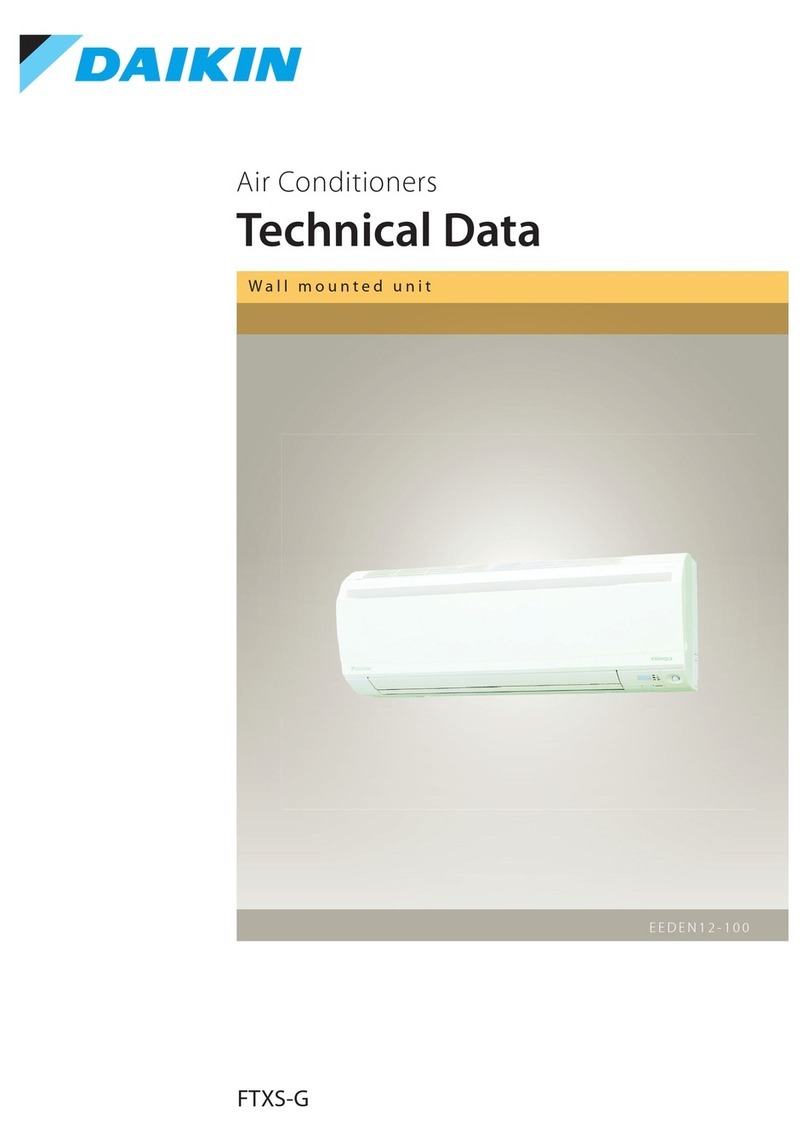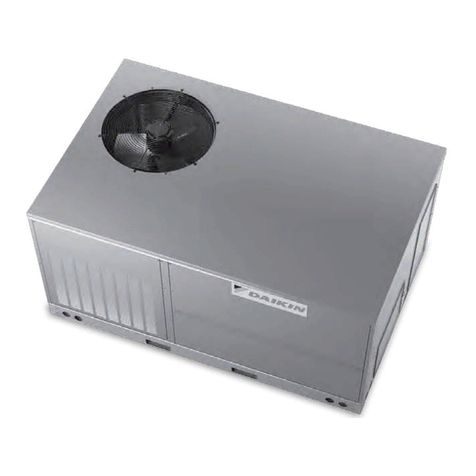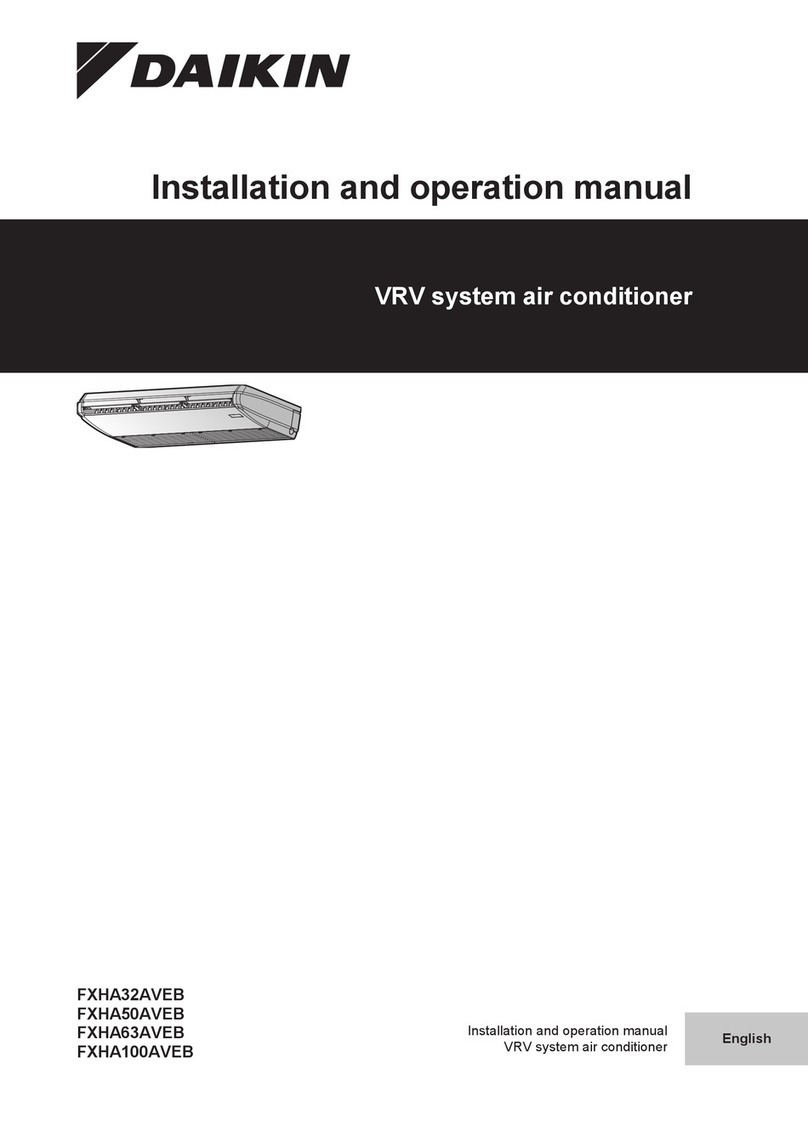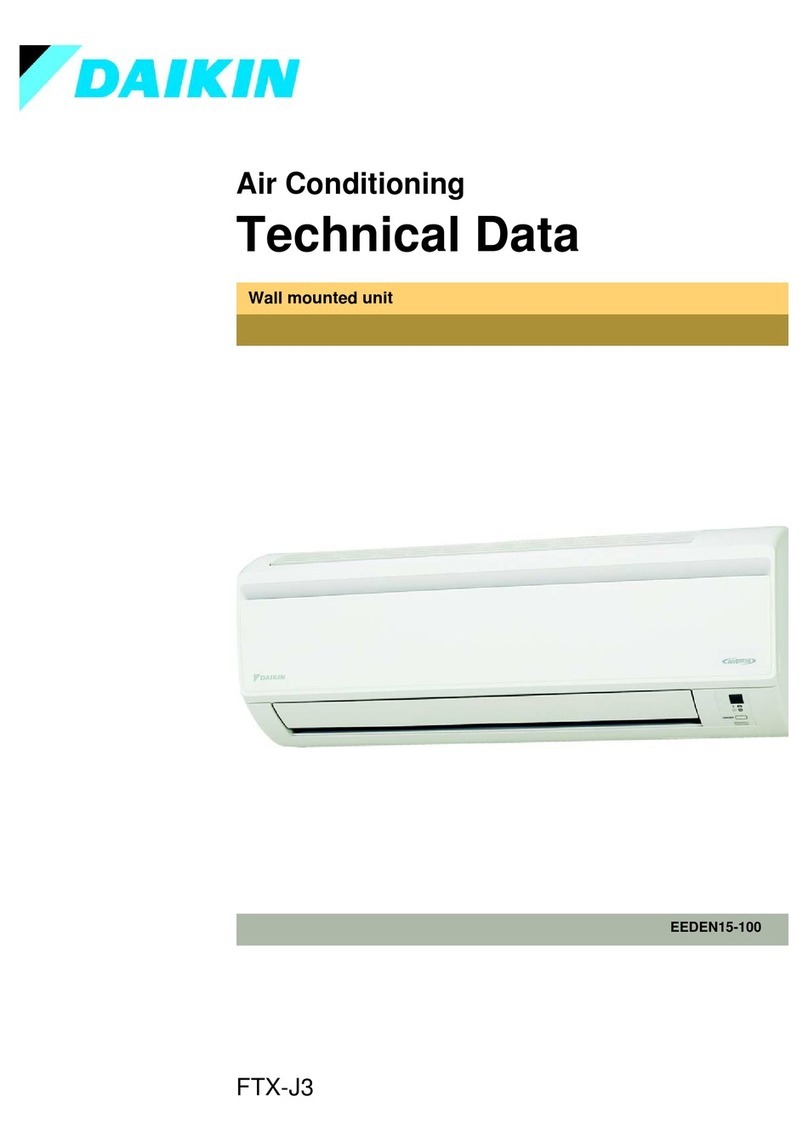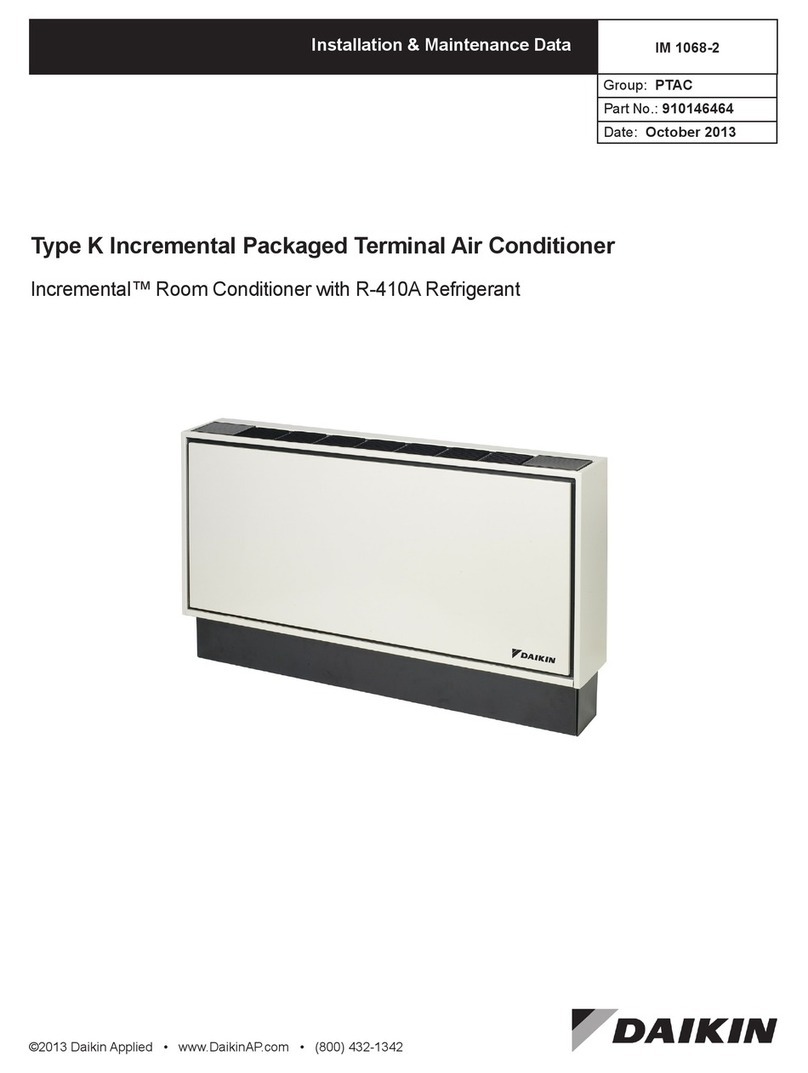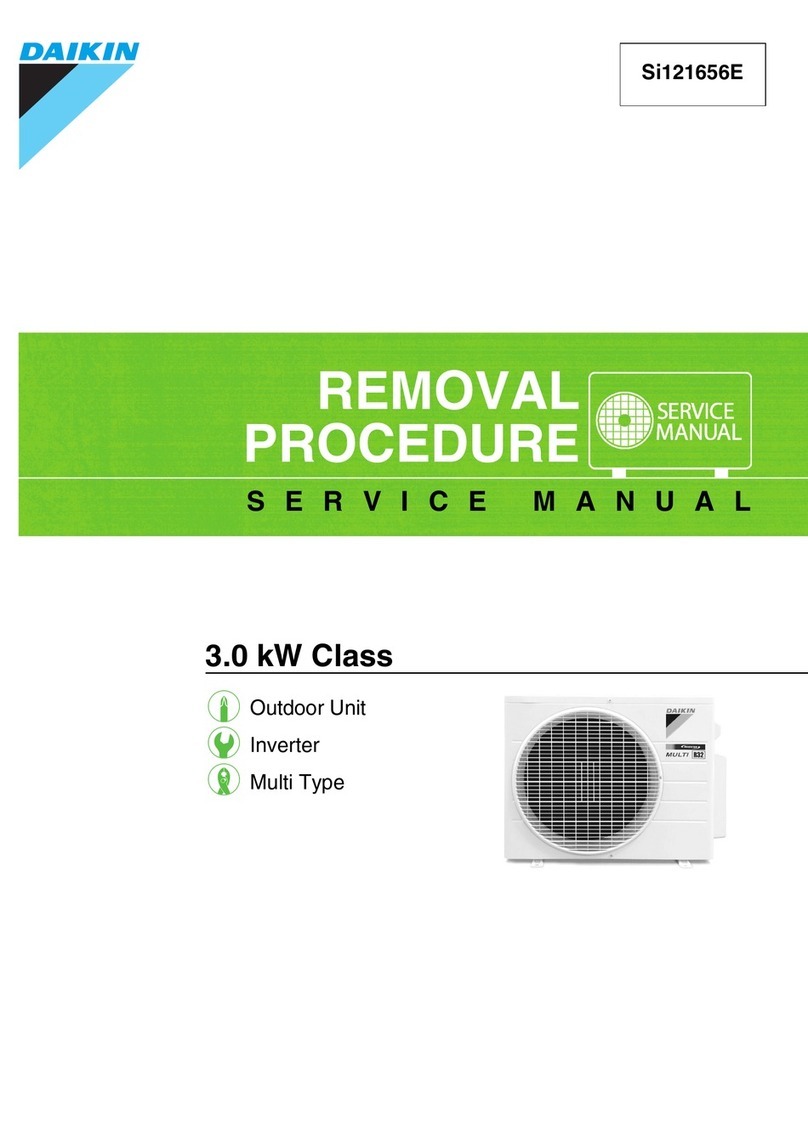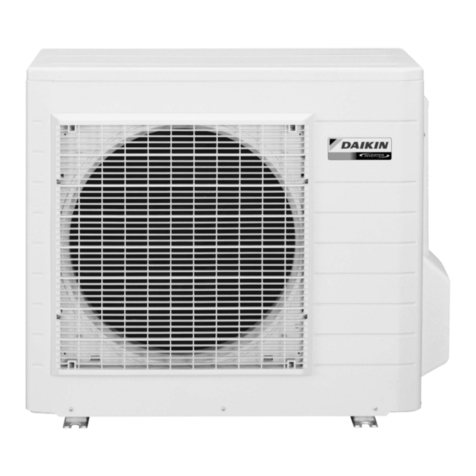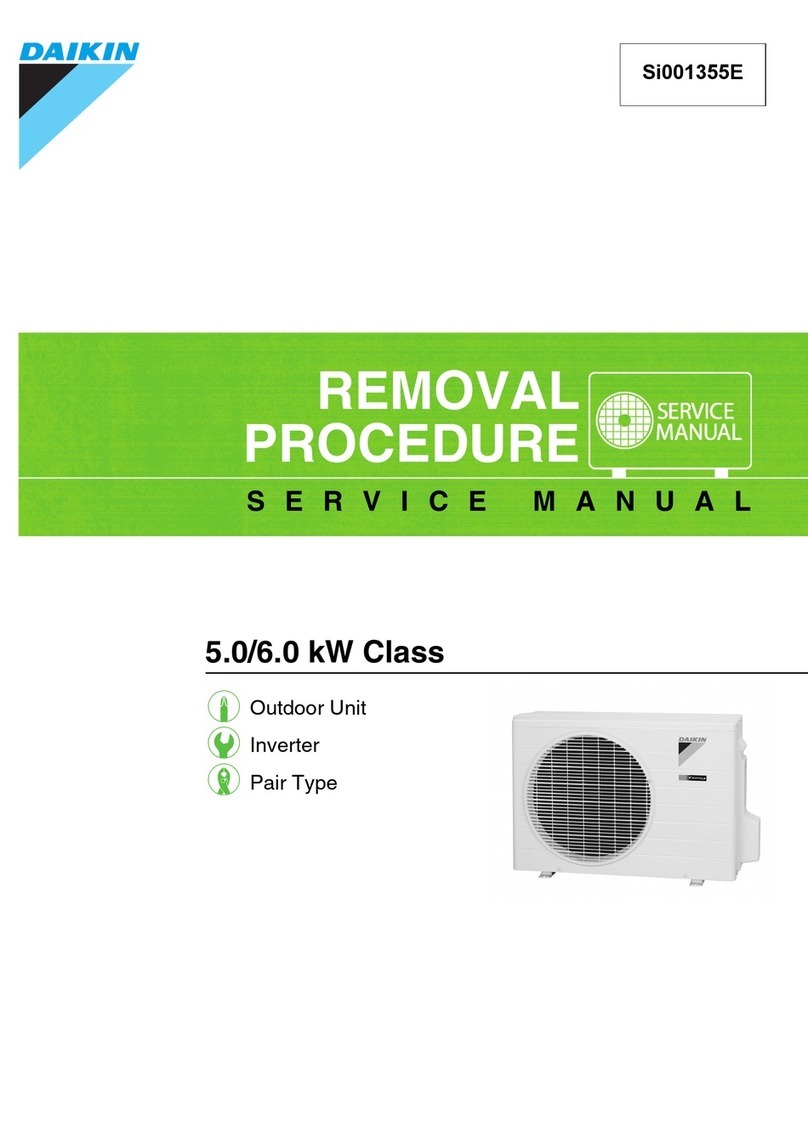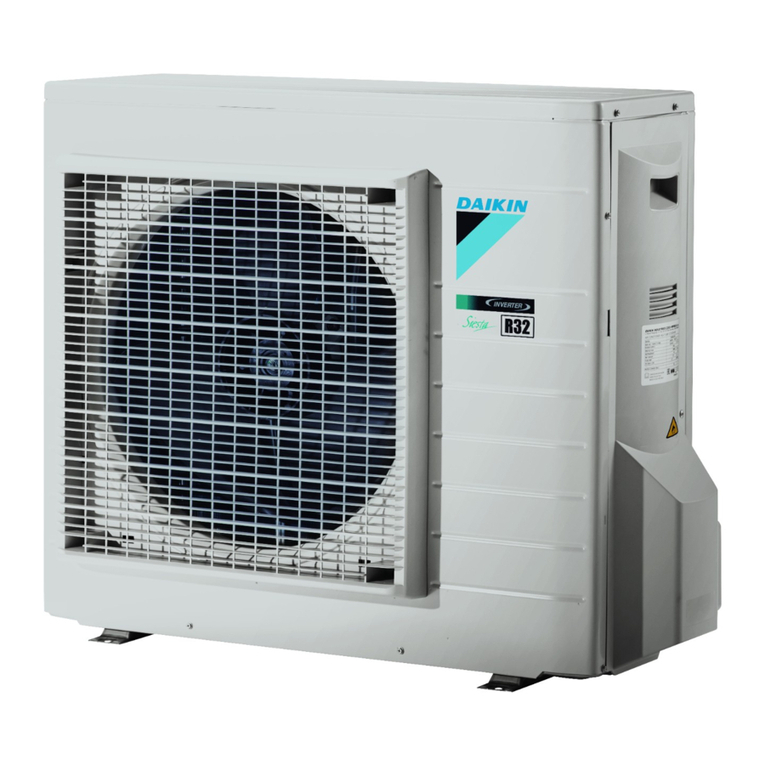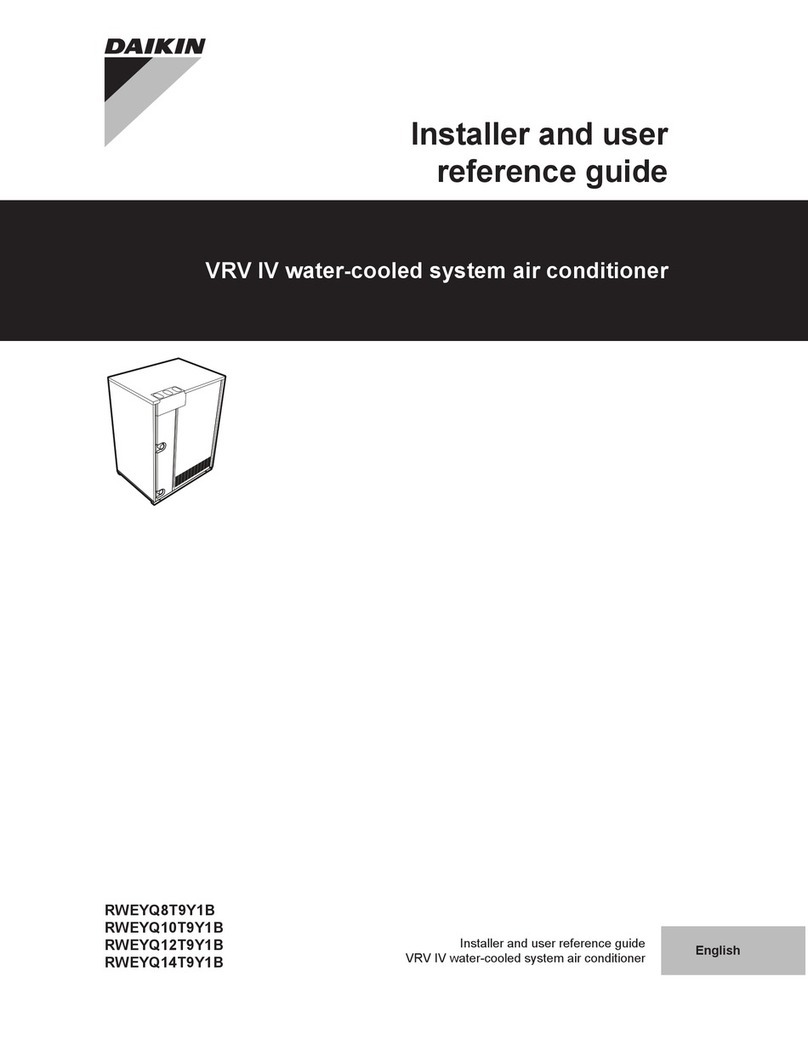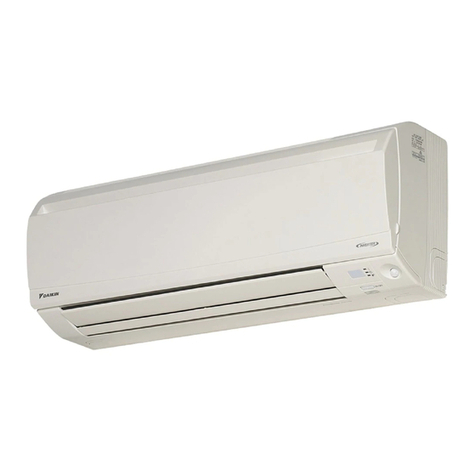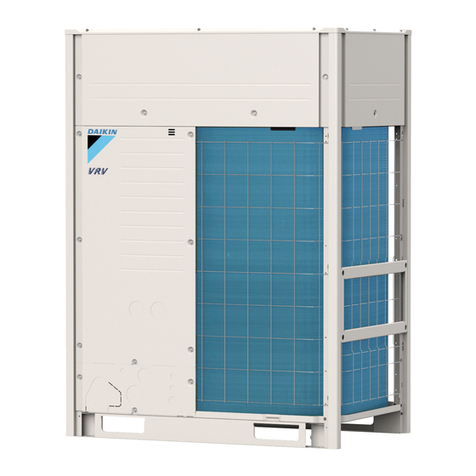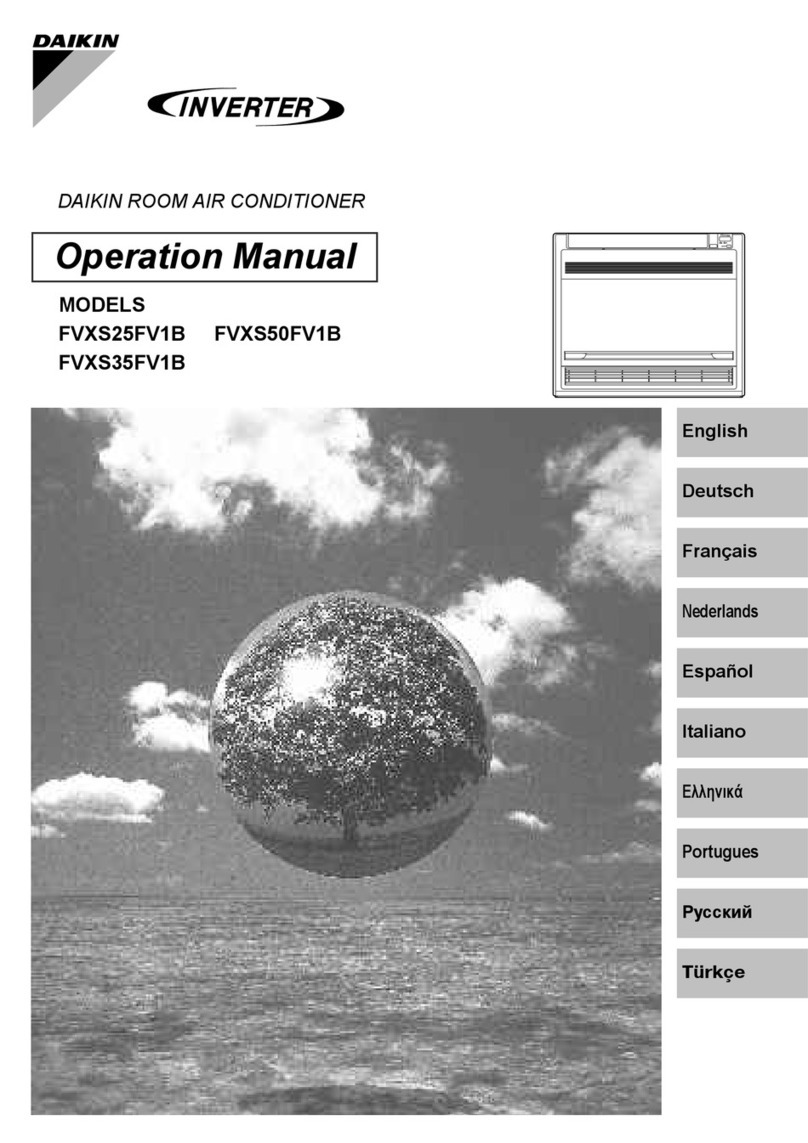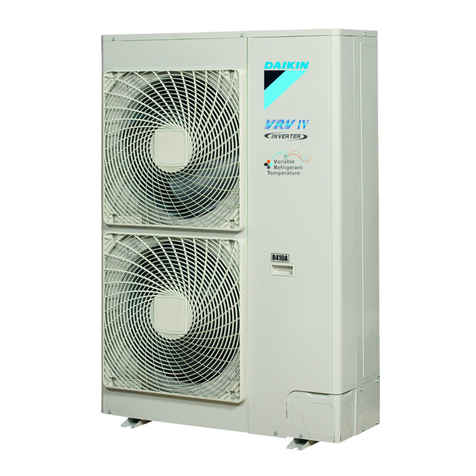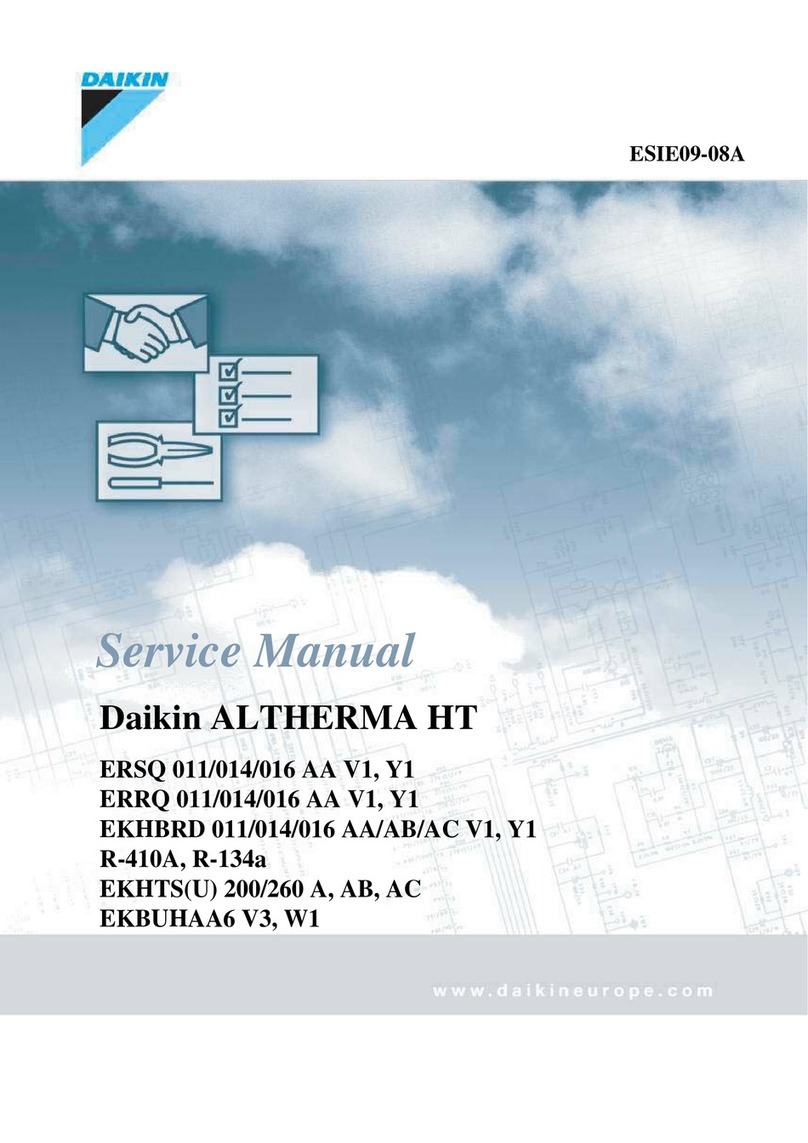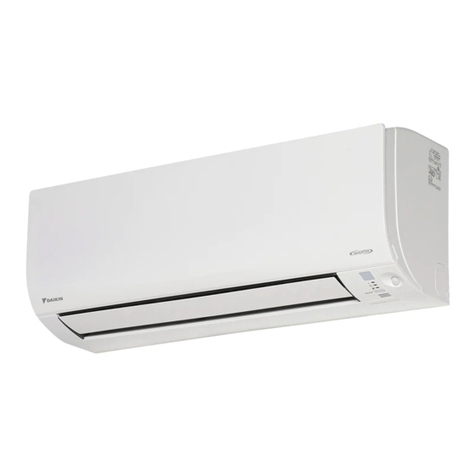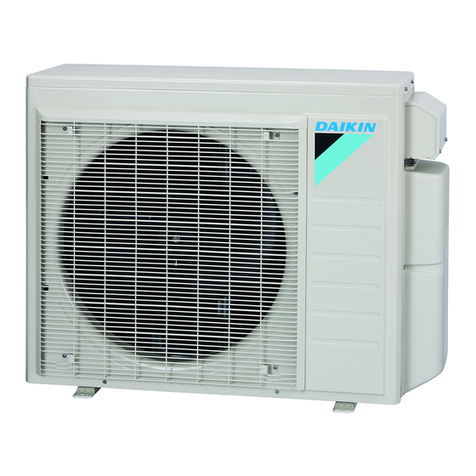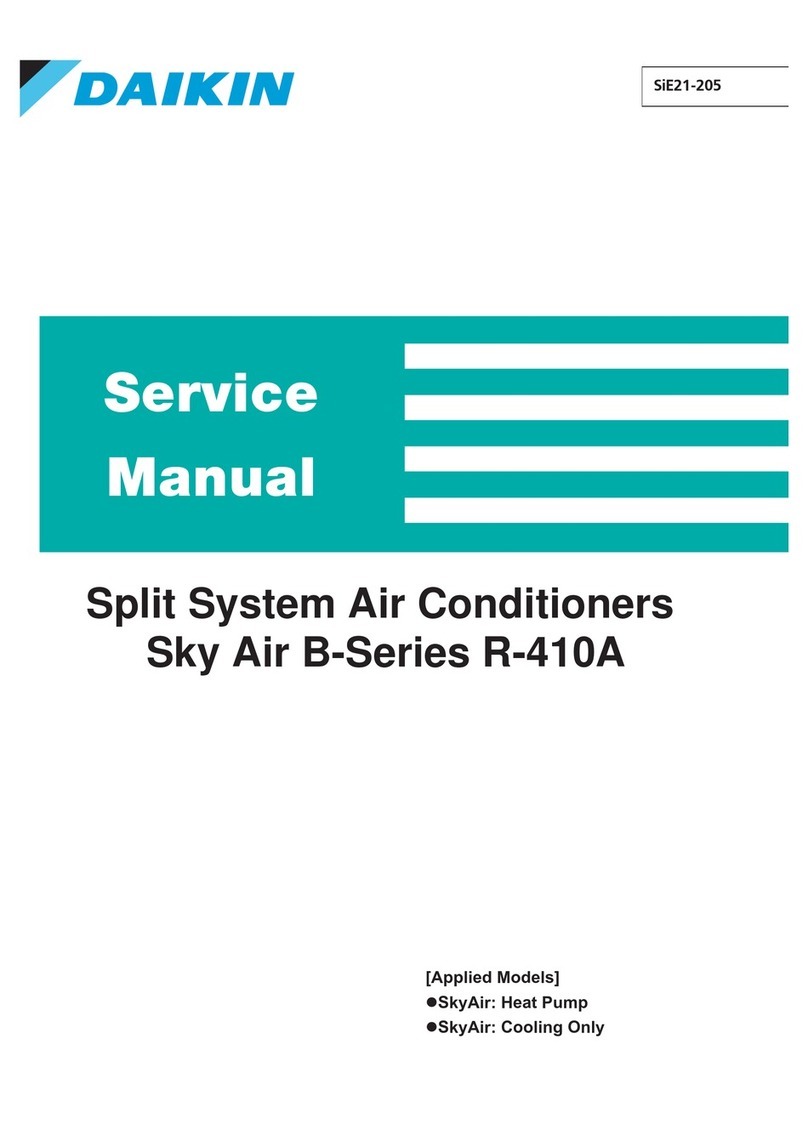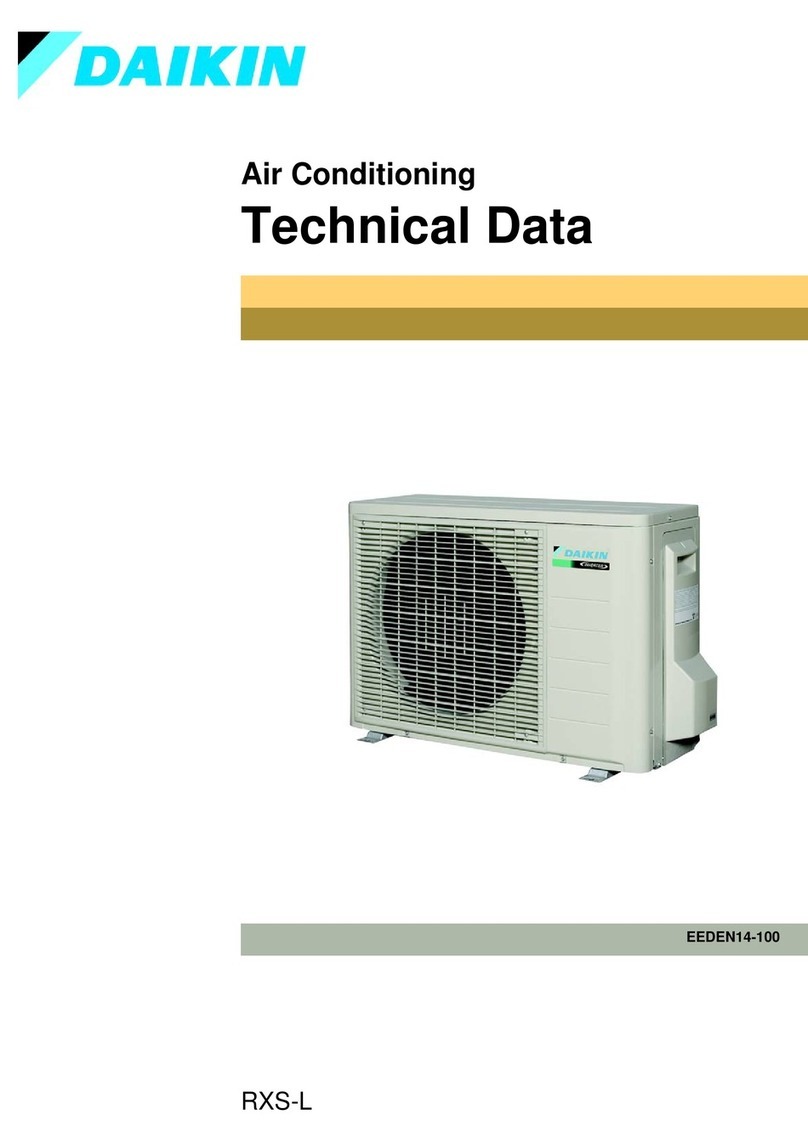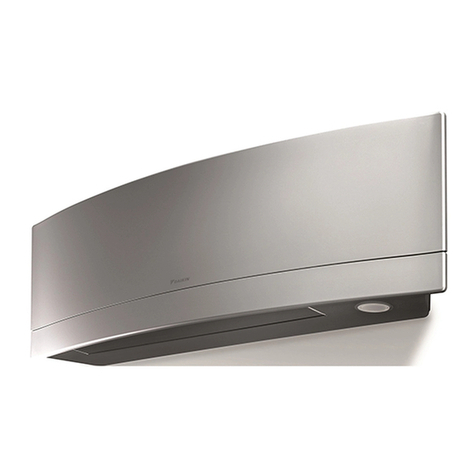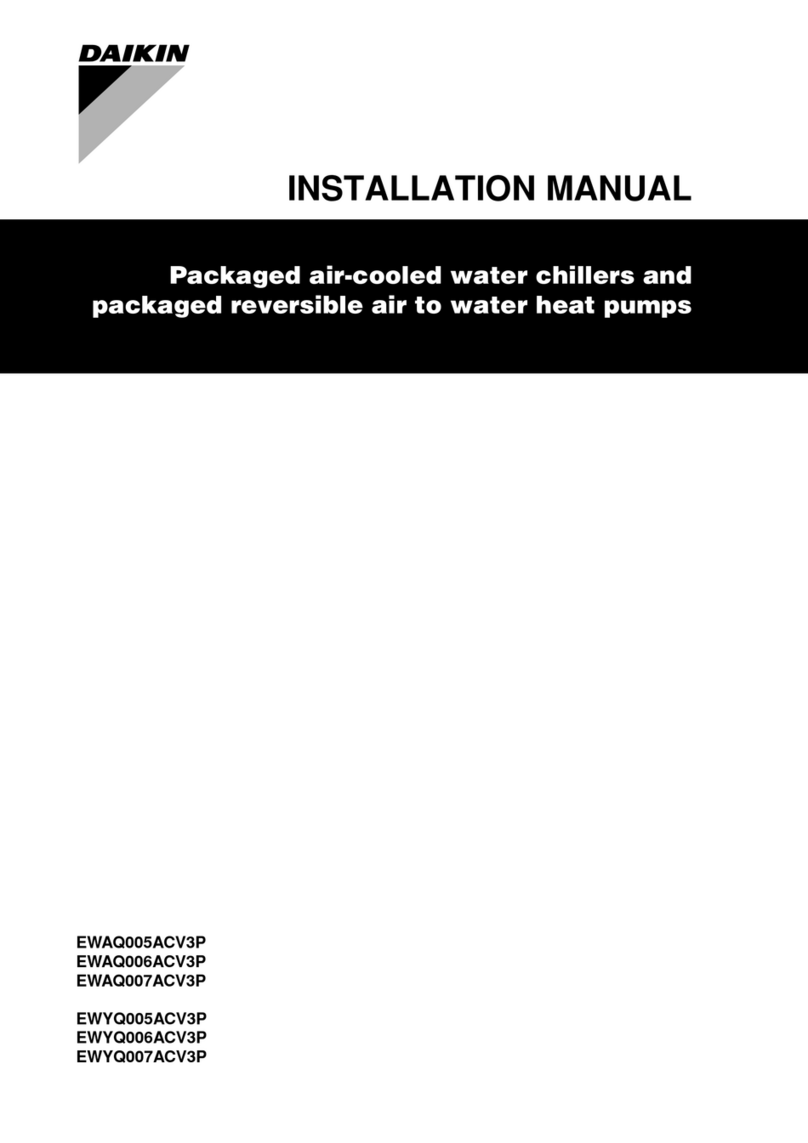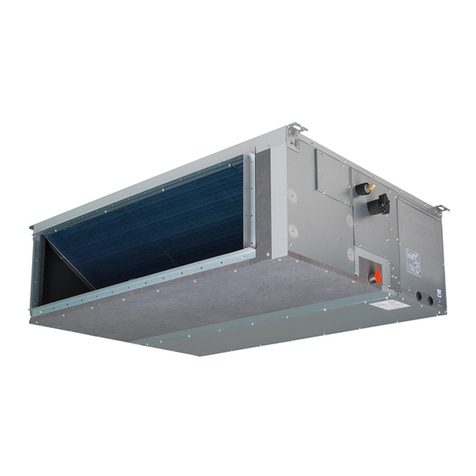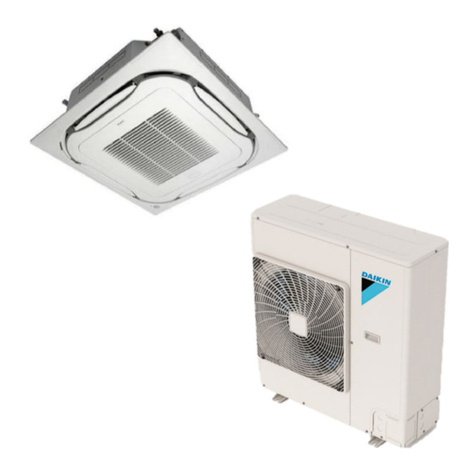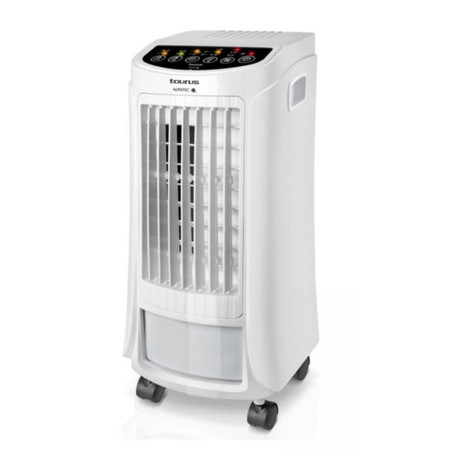
4
If burying refrigerant lines can not be avoided, use the
following checklist.
1. Insulate liquid and suction lines separately.
2.
lines in waterproof material (conduit or pipe) sealing
3. If the lines must pass under or through a concrete
slab, ensure lines are adequately protected and
sealed.
Torch heat required to braze tubes of various sizes is
proportional to the size of the tube. Tubes of smaller size
require less heat to bring the tube to brazing temperature
before adding brazing alloy. Applying too much heat to any
tube can melt the tube. Service personnel must use the
appropriate heat level for the size of the tube being brazed.
NOTE:
1. The ends of the refrigerant lines must be cut square,
deburred, cleaned, and be round and free from nicks
or dents. Any other condition increases the chance of
a refrigerant leak.
2.
during brazing to prevent the formation of copper-
present from the inside of the refrigerant lines and
spread it throughout the system. This may cause a
blockage or failure of the metering device.
3. After brazing, quench the joints with water or a wet
cloth to prevent overheating of the service valve.
4.
been burned or chipped, repaint or treat with a rust
preventative. This is especially important on suction
unit is operating.
are removed from refrigerant tubing.
WARNING
WARNING
Allow the pressure to stabilize and hold for 15 minutes
procedure outlined below to identify system leaks. Repeat
WARNING
WARNING
